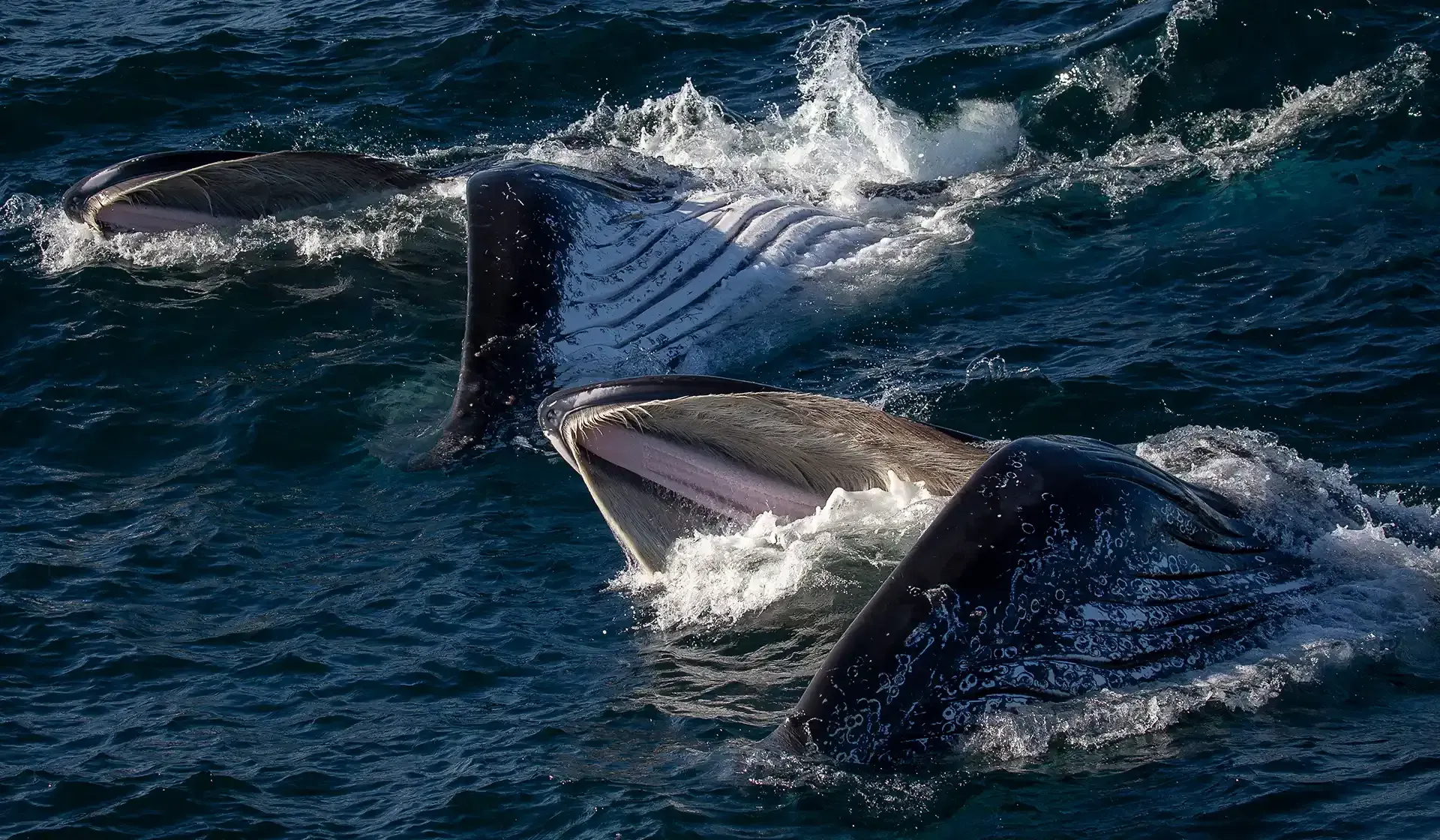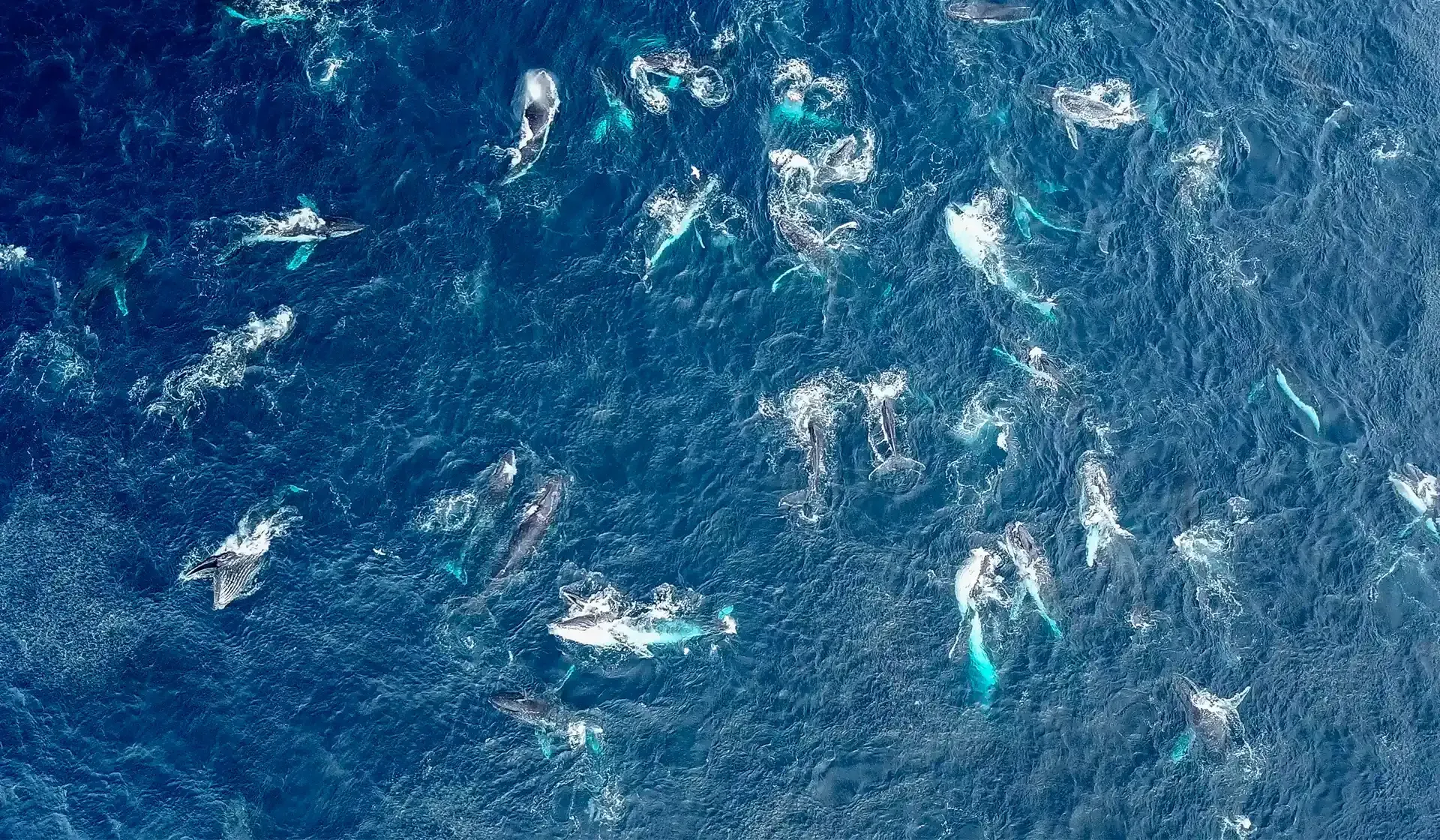Hey there ocean explorers,
Each year, humpback whales swim over 10,000 kilometres along Australia’s east coast on their annual journey from Antarctica to the Great Barrier Reef and back again. If you’ve ever wondered what keeps these massive animals going, the short answer is: a whole lot of tiny seafood.
The incredible humpback migration that occurs off Sydney each year is caused by two of life’s greatest motivators – food and family. Let’s dive into what humpback whales eat, why they travel thousands of kilometres every year to find their food, and how they feed.
What's on the menu for a humpback whale?
Despite their enormous size, the diet of a humpback whale consists of some of the smallest creatures in the ocean - mainly krill, along with other zooplankton and small fish when available.
The east coast Australian humpback population spends the summer months feeding in the icy waters of Antarctica, where krill is abundant. These tiny shrimp-like animals gather in massive swarms, and that’s when the humpbacks go to town. In fact, in summer humpbacks eat up to a tonne of krill a day, the weight of 12 average humans, to build up a thick layer of blubber.
That blubber is crucial, because once the whales leave Antarctica and start heading north to warmer waters, they stop eating almost altogether. For months, they rely on their fat reserves to fuel their migration, breeding and calving in the tropics.
Do humpbacks eat in Australian waters?
Generally not, with a couple of exceptions. There have been a few documented instances of humpback whales feeding in Sydney, however this behaviour is uncommon. When there’s a sudden abundance of small fish like bait balls made up of pilchards or anchovies, they sometimes take advantage of the opportunity.
Feeding is more common further south, especially on the NSW Sapphire Coast. Between Eden and Bermagui, humpback whales can be seen gathering in large pods to feed in the region’s nutrient-rich waters, most likely witnessed in August and September.
One standout event (and one of our career highlights) was a “mega-pod” of humpback whales observed bubble-net feeding off Bermagui in 2020 (pictured). This event was significant because it demonstrated that the Sapphire Coast waters serve as a supplementary feeding ground, not just a migratory route.
If you’re interested in witnessing feeding for yourself, check out our Sapphire Coastal Adventures whale watching tours in Eden, Merimbula and Bermagui.
Why do whales migrate away from their food source?
It all comes down to temperature. Humpback whales feed in cold Antarctic waters because that’s where the food is. But they give birth and raise calves in warm tropical waters, where their young have a better chance of survival.
Baby whales aren’t born with enough blubber to keep warm in icy conditions, so migrating to the tropics is essential. After birth, humpback calves rely on their mother’s milk in order to build up a thicker layer of blubber before they travel to Antarctica for the summer.


How do whales eat?
Humpback whales are a type of baleen whale, which means they don’t have teeth. Instead, they have baleen plates, long, comb-like strips made of keratin (like fingernails), that hang from their upper jaws.
Humpbacks use a method called lunge feeding, where they charge through a swarm of krill with their mouths wide open, scooping up huge amounts of water and prey. Then they push the water out through their baleen plates like a sieve, trapping the food inside. This filter-feeding method lets them scoop up thousands of tiny krill in one go, making them some of the most efficient feeders in the ocean.
Sometimes they feed cooperatively using a method called bubble-net feeding. A group of whales will blow bubbles in a circle to trap fish into a tight ball, then take turns lunging through the centre. It’s smart, coordinated and amazing to watch.
Food security for humpback whales
While humpback whales depend on krill to fuel their incredible migrations, these tiny crustaceans are now under threat from a changing climate. Warming ocean temperatures, melting Antarctic ice and acidification, as well as over-harvesting for krill oil and aquaculture, are making it harder for krill to survive. Since krill form the foundation of the Southern Ocean food web, their decline puts not only whales but many other marine species at risk. Protecting our marine environment is critical to ensuring that humpbacks can continue to thrive, and we can experience the wonder of whale migrations for years to come.
At Go Whale Watching Sydney, our purpose is to help you connect with the ocean and be inspired by its beauty. Our hope is that by helping people connect with the ocean, they will grow to love and help protect it. Want to join us? Book your whale watching Sydney tickets now!
Until next tide,




